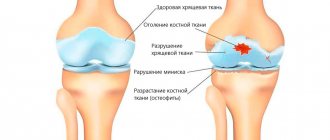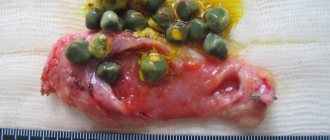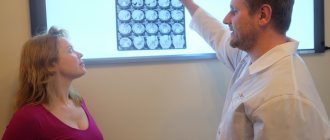Central nervous system degeneration is irreversible organic and functional changes in the spinal cord and brain that lead to mental degeneration. There are many types of diseases, the consequences of which are disturbances in the functioning of the nervous system. Accordingly, treatment will depend on the type of disease and the causes that cause it. Unfortunately, not all diseases of the central nervous system are treatable. Successful therapy for degenerative diseases of the central nervous system is performed at the Yusupov Hospital.
Degenerative diseases of the central nervous system: general concepts
The main characteristics of the group of degenerative diseases of the central nervous system are the following criteria:
- diseases begin unnoticed; before their appearance, the nervous system could function absolutely normally;
- diseases have a gradually progressive course and can last for years or decades;
- some degenerative diseases are associated with hereditary factors and develop in several members of the same family;
- a neurodegenerative disease of the central nervous system is characterized by the gradual death of neurons and their replacement by glial elements;
- atrophic processes at the initial stage of pathology development occur in a specific area of one of the cerebral hemispheres; further, during the advanced stage of degeneration, atrophy in the brain becomes almost symmetrical.
Various diseases of the central nervous system, the list of which is quite long, remain under study. The reasons for the occurrence of atrophic processes during the normal functioning of the nervous system for most of a person’s life are not reliably known. However, there are a number of factors that can trigger brain degeneration:
- alcohol abuse, drug addiction;
- toxic effects of pesticides and herbicides;
- meningococcal infection;
- viral encephalitis;
- deficiency of vitamin B12 and folic acid.
Symptoms
Each disease has its own set of symptoms. It is determined by the etiology, localization of neurological pathologies, and the general condition of the patient (presence/absence of concomitant chronic diseases, age). Conventionally, we can distinguish separate types of syndromes - general, motor, vegetative, pain.
Signs of a general syndrome reveal the presence of nonspecific problems in the human body. They are typical not only for the list of diseases of the nervous system, but also for a number of other problems - cardiovascular, endocrine, musculoskeletal. Their presence is a signal for a complete check-up of the body. A characteristic set of features:
- chronic fatigue, low performance;
- phobias, fears;
- insomnia;
- speech disorders (stuttering, dyslexia, etc.);
- muscle weakness, fatigue;
- frequent attacks of headaches, dizziness;
- changes in emotional background, irritability.
Movement syndrome is associated with impaired motor functions of the body. There are:
- paralysis (complete loss of motor function);
- paresis (partial loss of motor function);
- convulsions;
- tremor;
- tics;
- numbness of certain areas.
Vegetative syndrome can create a threat to life due to its impact on vital functions and indicators of the body:
- breathing is impaired;
- attacks of dizziness appear;
- blood pressure “jumps”;
- HR (heart rate) increases unjustifiably;
- Intestinal disorders (“bear disease”) appear regularly.
Pain syndrome is an integral consequence of the effect on nerve processes or tissue pain receptors. Appears as:
- neuralgia of various localizations;
- headache;
- myalgia (including in the eye area - ophthalmalgia);
- painful sensations in the heart area.
In addition, when various nerve structures of the brain are damaged, specific neurological symptoms occur. The main examples of damage to the brain of the central nervous system:
- damage to the cerebral cortex: hearing loss, speech impairment, memory problems, constant or recurrent headache, confusion, frequent fainting;
- injuries to subcortical structures: failures or complete shutdown of visual function, intolerance to bright light, slow reaction speed;
- disruption of the pons: difficulty concentrating, inability to concentrate, problems with coordination of movements;
- damage to cerebellar structures: problems with coordination, paresis, paralysis;
- abnormalities in the structure of the medulla oblongata: respiratory dysfunction, tissue hypoxia, problems with coordination of movements.
The spinal region of the central nervous system is responsible for conducting impulses from the brain to organs and tissues, responsible for the motor and sensory functions of the body. Damage to the spinal cord provokes symptoms:
- decreased limb mobility, up to paralysis;
- hypoxia (oxygen starvation) of tissues due to disruption of the respiratory muscles;
- general muscle weakness;
- numbness and loss of skin sensitivity.
Damage to the peripheral parts of the nervous system is accompanied by a functional failure in the underlying nerve structures. Depending on the severity of the damage, the following phenomena are possible:
- loss of sensation;
- muscular atrophy;
- damage to motor function - paresis, paralysis;
- tremors and tics;
- failure of autonomic functions - increased dryness of the skin of the extremities due to disruption of the sebaceous and sweat glands.
The final diagnosis can only be made by a neurologist after a thorough examination with anamnesis and consultation with related specialists (if necessary). Let's look at the symptoms of the most common neurological diseases.
Alzheimer's disease
It develops as a consequence of pathologically accelerated degeneration of nerve cells in the brain. The disease is irreversible, progressive, with an unknown etiology. Possible causes: disturbances in the structure of protein molecules of the central nervous system, lack of acetylcholine and deposition of beta-amyloid. The prognosis is unfavorable: subject to timely diagnosis and quality therapy, the residual life expectancy does not exceed 14 years. At the same time, the quality of life is greatly reduced by the symptoms of the disease:
- mood swings;
- cognitive impairment;
- visual, auditory, tactile hallucinations;
- decrease in muscle mass.
Over time, the patient completely loses the ability to self-care and personal identity. He requires special care and constant supervision from relatives or guardians.
Epilepsy
It is based on abnormal activity of nerve cells in the brain. Manifests itself in the form of repeated epileptic seizures and often has a hidden course. The prognosis is favorable: properly selected drug treatment can completely relieve the patient from signs of the disease. However, in the absence of therapy or in particularly complex cases of the idiopathic form with severe somatomotor or somatosensory seizures, it can cause mental impairment and even death. A clear specific symptom of epilepsy is seizures. In a hidden flow, it is worth paying attention to the following set of signs:
- increased irritability;
- causeless anxiety, fear, melancholy;
- impaired coordination of movements;
- auditory, olfactory, visual hallucinations of varying severity.
Encephalomyelitis
The disease is associated with damage to the myelin sheath of nerve processes. Develops as a result of infectious, autoimmune or genetic pathology. It manifests itself as an increasing complex of neurological reactions:
- weak muscle tone;
- nystagmus (involuntary movements) of the eyes;
- tremor of the limbs;
- paresis, paralysis;
- memory problems.
The disease has progressive neurological symptoms. A favorable prognosis for life is maintained only with timely treatment - in 60% of cases a complete recovery with restoration of all functions is possible. Otherwise, lifelong symptoms persist in the form of paresis, paralysis, visual and auditory abnormalities of varying severity.
Neuralgia
Associated with damage to peripheral nerves of various locations. It appears suddenly, paroxysmally along the location of the main nerve trunk. Develops due to compression or pinching by surrounding tissues. The main symptom is severe pain. Additionally, itching and burning, tics, cramps, and redness of the skin may develop.
Important! It is necessary to distinguish neuralgia from neuritis. The latter is an inflammatory disease of the peripheral nerves with impaired nerve conduction and associated loss of motor and sensory function (muscle weakness, paresis, paralysis, numbness). With neuralgia, muscle mobility is completely preserved.
Organic diseases of the central nervous system
The presence of an organic disease of the central nervous system means that the brain is defective. The pathology can be congenital or acquired. Neurologists say that organic disorders of the central nervous system of the first stage can be found in 98% of the population, but they do not require treatment. The second and third stages are characterized by more serious lesions and are accompanied by significant deviations.
Congenital organic brain lesions occur during embryonic development or during childbirth as a result of birth trauma. The reasons for their appearance may be unfavorable factors that influenced the pregnant woman:
- woman's use of alcohol and drugs;
- severe influenza or other infectious diseases during pregnancy;
- the effect of certain medications;
- severe stress.
Acquired organic lesions can occur after a stroke, traumatic brain injury, alcohol and drug abuse, and infectious diseases with brain damage.
Among the diseases that are caused by organic lesions of the central nervous system, mental retardation and dementia are distinguished. With oligophrenia, mental retardation occurs. The disease occurs during fetal development or in the first year of life. Children have reduced intelligence and poorly developed speech and motor skills. With dementia, there is a loss of previously acquired skills and knowledge. Gradually, dementia leads to complete degradation of a person. Considering this disease of the central nervous system, the symptoms are the following: impaired memory, speech, orientation in space, a person cannot learn new things and loses old skills and knowledge.
Reasons for development
The list of factors that provoke the development of neurological abnormalities is extensive. Basic reasons:
- prolonged hypoxia;
- tumor process;
- taking certain medications;
- hormonal abnormalities;
- poisoning with toxins;
- gene and chromosomal mutations;
- infections;
- injuries (including electrical injuries);
- radioactive exposure;
- metabolic disease.
The state of the nervous system is also affected by the environment, quality of nutrition, state of the immune system, stress level, and degree of physical and mental activity.
Infectious diseases of the central nervous system
Infectious diseases of the central nervous system are among the most common neurological pathologies. CNS diseases caused by infection are very dangerous. They have a severe course, leave serious consequences and significant neurological deficits. Infectious diseases of the central nervous system can be caused by bacteria, viruses, and fungal diseases. Most often, diseases develop when meningococcus, staphylococcus, pneumococcus, ECHO and Coxsackie enteroviruses, mumps, and candida enter the body. The entry gates for infection are the ENT organs; it is also transmitted by contact, hematogenous, lymphogenous, and perineural routes.
The infection can affect the nervous system as a primary disease or occur secondarily as a result of the development of an infectious process outside the central nervous system. Infectious diseases of the central nervous system include:
- meningitis,
- encephalitis,
- polio,
- syphilis of the nervous system,
- toxoplasmosis of the nervous system,
- neurological manifestations of HIV infection,
- parasitic diseases of the nervous system.
Vascular diseases of the central nervous system
Poor circulation in the brain provokes the development of vascular diseases of the central nervous system. These pathologies are extremely dangerous because in most cases they lead to disability. Also, vascular diseases of the central nervous system have a high mortality rate. Brain damage occurs as a result of ischemic and hemorrhagic strokes, transient ischemic attacks, and spontaneous subarachnoid hemorrhages. The causes of such pathologies are:
- aneurysms,
- thromboembolism,
- vascular atherosclerosis,
- hypertonic disease,
- acute toxic damage to the walls of blood vessels,
- chronic degenerative diseases of the walls of blood vessels.
The trigger for the development of strokes can be severe stress, seizures, alcohol intoxication, and sudden changes in body temperature. Vascular disease of the central nervous system most often occurs spontaneously and requires immediate medical attention.
Treatment and diagnosis of degenerative diseases of the central nervous system
The danger of degenerative diseases of the central nervous system is that they are difficult to predict. If there are provoking factors in a person’s life, it is recommended to lead a healthy lifestyle and regularly visit a neurologist for preventive examinations. If you suspect signs of a central nervous system disease, you should immediately consult a doctor. The earlier the disease is detected, the greater the chance of slowing down the progression of degenerative processes in the brain.
Diagnosis and treatment of degenerative diseases will depend on the type of pathology. Having determined the clinical picture of the disease, the doctor will prescribe tests to clarify the patient’s condition. These may include laboratory tests, ultrasound, MRI, CT, and psychological tests to determine the status of cognitive skills.
At the Yusupov Hospital in Moscow there is a neurology clinic, where highly qualified neurologists and doctors of sciences provide assistance. Doctors at the Yusupov Hospital have extensive experience in treating degenerative diseases of the central nervous system and use the latest methods of therapy and rehabilitation in their work, which allows them to take on the most complex cases.
You can ask for help, make an appointment and get advice from specialists by phone.
Diagnostics
An examination by a neurologist begins with a thorough external examination, checking the psychophysical state and collecting an anamnesis. After a preliminary diagnosis is made, additional instrumental and laboratory tests are prescribed. To identify structural changes in nervous tissue, use:
- angiography;
- Dopplerography of blood vessels;
- CT and MRI;
- ECG;
- encephalography;
- neurosonography;
- polysomnography, etc.
A comprehensive diagnosis may require the participation of other specialized specialists - a cardiologist, angiologist, endocrinologist, oncologist, ophthalmologist, gastroenterologist, orthopedist, surgeon.










